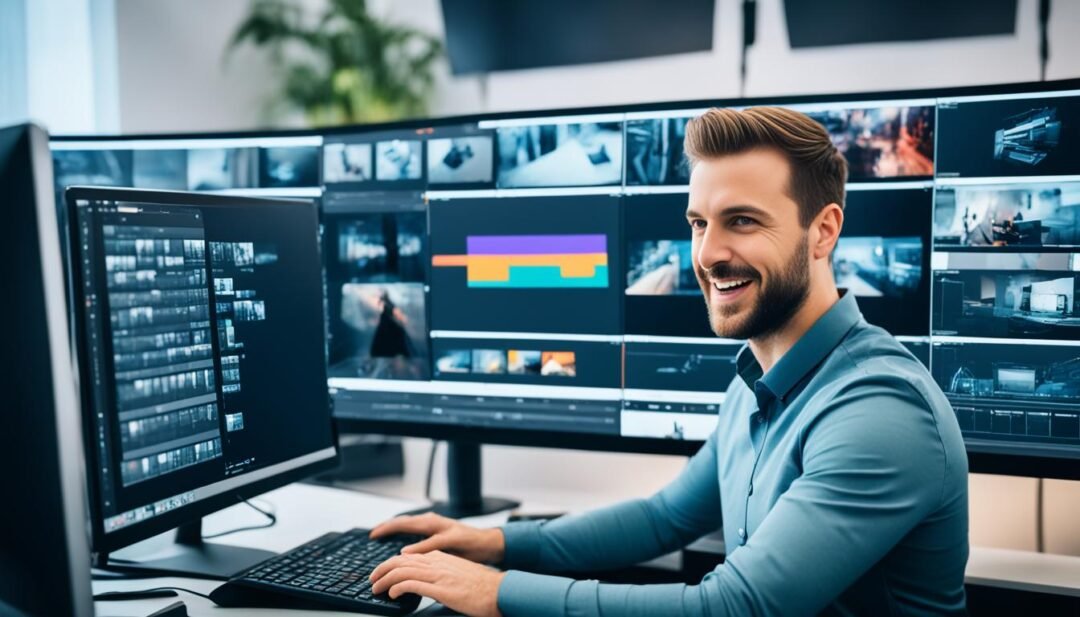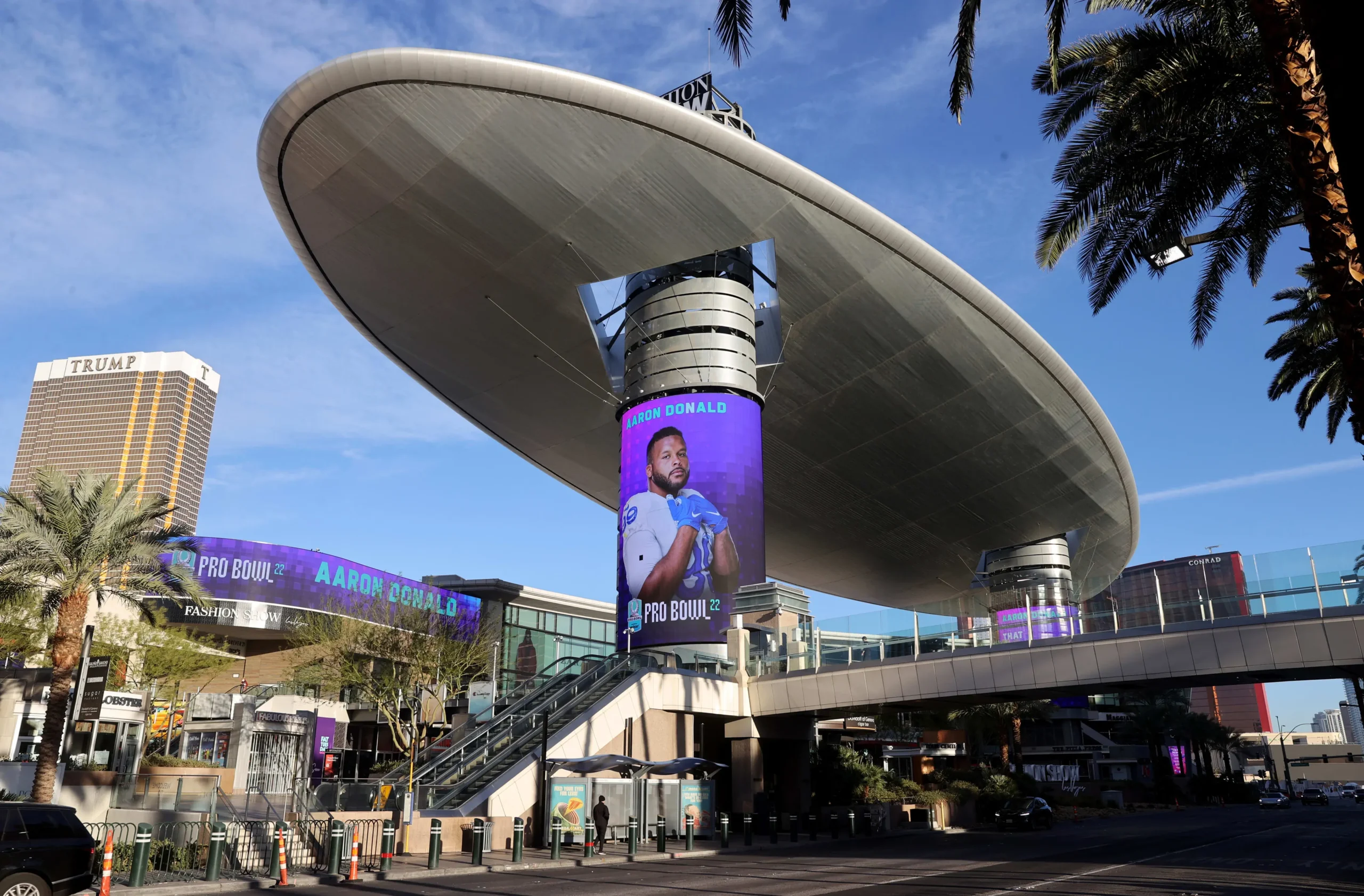Did you know that nearly 70% of online shoppers say they would make more purchases if they could virtually try on products before buying? This staggering statistic underscores the critical importance of creating high-quality try-on videos to enhance the online shopping experience, boost customer confidence and sales, and reduce product returns and exchanges.
In this expert guide, we’ll cover the essential steps to creating try-on videos that captivate your audience, drive conversions, and set your e-commerce business apart from the competition. From planning the production to leveraging the latest computer vision and AI technologies, we’ll dive deep into the world of virtual try-on experiences and help you unlock the full potential of this powerful marketing tool.
Key Takeaways
- High-quality try-on videos can significantly improve the online shopping experience and boost customer confidence.
- Leveraging computer vision and AI technologies, such as 3D garment simulation and virtual fitting rooms, can enhance the try-on experience.
- Optimizing try-on videos for search engines and promoting them effectively are crucial for driving engagement and conversions.
- Measuring and analyzing video performance can help you refine your strategy and deliver the best possible experience for your customers.
- Maintaining consistency in quality and staying up-to-date with industry trends are key to the long-term success of your try-on video strategy.
Importance of High-Quality Try-On Videos
High-quality try-on videos can enhance the online shopping experience by allowing customers to virtually see and interact with products before purchasing. This can help overcome the challenges of not being able to physically try on items in an e-commerce setting.
Enhancing the Online Shopping Experience
By providing a more immersive and engaging virtual try-on experience, these videos can help bridge the gap between in-store and online shopping. Customers can get a better sense of how a product will look and fit, which can lead to increased satisfaction and confidence in their purchasing decisions.
Boosting Customer Confidence and Sales
Try-on videos can boost customer confidence by offering a more realistic representation of a product’s appearance and fit. With this added confidence, customers are more likely to make a purchase, resulting in increased sales and revenue for the business.
Reducing Product Returns and Exchanges
By giving customers a better understanding of how a product will look and fit, try-on videos can help reduce the number of product returns and exchanges. This can lead to cost savings and a more efficient supply chain for the business, as well as a more positive overall customer experience.
Planning Your Try-On Video Production
When planning your try-on video production, it’s crucial to identify your target audience and the specific products you want to feature. Understanding your audience’s needs and preferences will help you create videos that resonate with them and provide a seamless virtual try-on experience.
Identifying Your Target Audience and Products
Begin by conducting thorough market research to understand your target demographic, their shopping habits, and the types of products they’re most interested in. This information will guide you in selecting the right products to showcase in your try-on videos and ensure that your content aligns with their preferences.
Defining Your Video Style and Tone
Deciding on the overall style and tone of your try-on videos is another crucial step in the planning process. Consider factors like lighting, background, and camera angles to create a professional and engaging visual aesthetic that complements your brand identity. Experiment with different approaches to find the optimal balance between informative and visually appealing content.
Creating high-quality try-on videos
To create high-quality try-on videos, it’s essential to invest in the right equipment and software. This includes a high-quality camera, a well-designed lighting setup, and powerful video editing tools to ensure your videos look professional and polished.
Choosing the Right Equipment and Software
The camera you use for your try-on videos should be capable of capturing clear, high-resolution footage. Consider investing in a DSLR or mirrorless camera with features like 4K video recording and advanced autofocus capabilities. Pair your camera with a sturdy tripod to ensure stable and consistent footage.
In addition to the camera, you’ll need to set up proper lighting to showcase your products effectively. Experiment with different lighting setups, such as a three-point lighting system or softboxes, to create the desired look and feel for your videos.
Once you have your footage captured, you’ll need to use video editing software to enhance the quality and add any necessary branding or call-to-action elements. Popular tools like Adobe Premiere Pro, Final Cut Pro, or even free options like DaVinci Resolve can help you achieve a professional-grade finish.
Optimizing Lighting and Background
Proper lighting and a clean, uncluttered background are essential for creating try-on videos that showcase your products effectively. Experiment with different lighting setups, such as using a three-point lighting system or softboxes, to create the desired look and feel for your videos.
Pay close attention to the background of your videos as well. Opt for a plain, neutral-colored backdrop that won’t distract from the product being showcased. Avoid busy or cluttered environments that could detract from the focus on the item.
Capturing Clear Audio and Video Footage
In addition to the visual elements, capturing clear audio and video footage is crucial for try-on videos. Use a high-quality microphone, such as a lavalier or shotgun mic, to ensure your narration and any background sounds are recorded with excellent clarity.
When filming, pay close attention to the camera angles and framing to ensure your products are showcased in the best possible way. Experiment with different shots, such as full-body, close-up, and rotating views, to give your viewers a comprehensive understanding of the item.
Leveraging Computer Vision and AI
Advances in computer vision and artificial intelligence (AI) technologies have paved the way for groundbreaking innovations in the e-commerce industry, particularly in the realm of virtual try-on experiences. These cutting-edge technologies have enabled the creation of highly realistic 3D garment simulation and rendering capabilities, which can be seamlessly integrated into online shopping platforms.
3D Garment Simulation and Rendering
The integration of 3D garment simulation and rendering technologies allows customers to visualize how clothing will look and fit on their bodies without physically trying on the items. By leveraging sophisticated algorithms and data-driven models, these solutions can generate highly accurate digital representations of garments, accurately capturing their materials, drape, and fit. This empowers shoppers to make more informed purchasing decisions, ultimately leading to a more seamless and satisfying online shopping experience.
Virtual Fitting Room and Augmented Reality
Building upon the advancements in 3D garment simulation, virtual fitting room and augmented reality (AR) try-on features have become increasingly prevalent in the e-commerce landscape. These immersive technologies allow customers to virtually “try on” products, seeing how they would look and fit on their own bodies in real-time. By integrating these capabilities directly into e-commerce platforms, businesses can provide an engaging and personalized shopping experience that can significantly enhance customer confidence and reduce product returns.
| Feature | Benefits |
|---|---|
| 3D Garment Simulation |
|
| Virtual Fitting Room and AR Try-On |
|
Editing and Post-Production
After capturing the footage for your try-on videos, the editing and post-production process is crucial for enhancing the overall quality. This may include adjusting lighting, color grading, and adding visual effects to create a polished and professional look.
Enhancing Video Quality
The editing phase allows you to refine the visual elements of your try-on videos, ensuring they are visually appealing and engaging for your audience. By adjusting the lighting, color, and applying strategic visual effects, you can elevate the production value and create a cohesive, branded look across all your video content.
Adding Branding and Call-to-Action Elements
Incorporating your brand’s visual identity and adding strategic call-to-action elements can help make your try-on videos more effective in driving customer engagement and conversions. This may include adding logos, overlays, and clear calls-to-action that encourage viewers to take the next step in their shopping journey, such as visiting your e-commerce platform or adding a product to their cart.

Optimizing Videos for Search Engines
In the digital age, ensuring your try-on videos are easily discoverable by your target audience is crucial for maximizing their impact. By conducting thorough keyword research and optimizing your videos for search engines, you can improve their visibility and attract more engaged viewers to your e-commerce platform.
Keyword Research and Video Optimization
Begin by identifying the keywords and phrases that your potential customers are likely to use when searching for products like those featured in your try-on videos. Utilize tools like Google Keyword Planner, Ahrefs, or SEMrush to uncover the most relevant and high-performing keywords in your industry. Incorporate these keywords strategically into your video titles, descriptions, and tags to increase the chances of your content appearing in search engine results.
Creating Engaging Titles and Descriptions
Crafting compelling and informative video titles and descriptions is essential for capturing the attention of viewers and encouraging them to watch your content. Highlight the key features and benefits of the products being showcased, and use language that resonates with your target audience. Avoid overly generic or clickbait-style titles, and instead focus on providing clear, honest, and value-driven information that will entice potential customers.
Promoting and Distributing Your Videos
Promoting and distributing your try-on videos across various social media platforms and through influencer marketing can help reach a wider audience and drive more traffic to your e-commerce platform. Identifying relevant influencers and collaborating with them can be an effective way to showcase your products.
Leveraging Social Media and Influencer Marketing
Platforms like Instagram, TikTok, and YouTube offer excellent opportunities to promote your try-on videos and reach your target audience. Crafting engaging social media content, utilizing relevant hashtags, and partnering with influential figures in your industry can significantly boost the visibility and reach of your videos.
Collaborating with social media influencers who align with your brand and have an engaged following can be a powerful strategy. These influencers can showcase your products in their own try-on videos, providing their audiences with a trusted and relatable recommendation.
Integrating Videos into Your E-Commerce Platform
Seamlessly integrating your try-on videos into your e-commerce platform can enhance the shopping experience and make it easier for customers to visualize how products will look and fit. This can include embedding videos directly on product pages or creating dedicated try-on sections that showcase your entire collection.
By making your try-on videos an integral part of the shopping experience, you can help customers make more informed purchasing decisions, leading to increased sales and reduced product returns.
Measuring and Analyzing Video Performance
Tracking key performance indicators (KPIs) is crucial for evaluating the success of your try-on videos and informing future content strategies. By closely monitoring metrics such as view count, engagement rate, conversion rate, and customer feedback, you can optimize your videos to deliver better results.
Key Performance Indicators (KPIs) to Track
Closely monitoring the following KPIs can provide valuable insights into the effectiveness of your try-on videos:
- View Count: The number of times your videos are watched, indicating their reach and popularity.
- Engagement Rate: The level of interaction with your videos, including likes, shares, and comments, which reflects audience interest and engagement.
- Conversion Rate: The percentage of viewers who take a desired action, such as making a purchase or adding a product to their cart, after watching your try-on videos.
- Customer Feedback: Reviews, comments, and survey responses from your audience, providing valuable insights into their perceptions and preferences.
Gathering Customer Feedback and Insights
In addition to tracking KPIs, gathering direct feedback and insights from your customers can help you improve the quality and relevance of your try-on videos. This can include:
- Collecting reviews and comments on your try-on videos, either on your e-commerce platform or social media channels.
- Conducting surveys to gather customer opinions, preferences, and suggestions for enhancing the try-on video experience.
- Analyzing customer support inquiries and interactions to identify common questions or pain points related to the try-on video experience.
By regularly analyzing your KPIs and gathering customer feedback, you can continually optimize your try-on video strategy to better meet the needs of your target audience and drive more successful outcomes for your business.
Best Practices and Tips
To ensure the effectiveness of your try-on video strategy, it’s crucial to maintain consistency in the quality and style of your videos. Establishing clear guidelines and best practices for your video production process can help you deliver a cohesive and professional experience for your customers.
Maintaining Consistency and Quality
Consistency is key when it comes to creating high-quality try-on videos. Develop a set of production standards and guidelines that your team can follow to ensure a uniform look and feel across all your videos. This may include specifications for lighting, camera angles, product presentation, and even the tone of voice used in the narration.
Regularly review your videos to ensure they meet your quality standards. Investing in professional video editing tools and techniques can also help elevate the overall production value of your try-on content.
Staying Up-to-Date with Industry Trends
The world of e-commerce and video content is constantly evolving, so it’s crucial to stay up-to-date with the latest industry trends and technologies. Regularly research and analyze the best practices and innovations in the try-on video space to ensure your strategy remains relevant and effective.
Consider attending industry events, subscribing to relevant newsletters, and networking with other professionals to stay informed about the latest developments in the field. Adapting your try-on video strategy as needed can help you stay ahead of the competition and provide the best possible experience for your customers.
Conclusion
Creating high-quality try-on videos has emerged as a powerful tool for enhancing the online shopping experience, boosting customer confidence and sales, and reducing product returns and exchanges. By leveraging the latest technologies, such as 3D garment simulation, virtual fitting rooms, and augmented reality, businesses can provide their customers with a seamless and engaging virtual try-on experience.
To deliver these impactful try-on videos, it’s essential to carefully plan the production, optimize the videos for search engines, and promote them effectively across multiple channels. Regularly measuring and analyzing the performance of your try-on videos, as well as staying up-to-date with industry trends, can help you continuously refine and improve your strategy.
Ultimately, the integration of high-quality try-on videos into your e-commerce platform can be a game-changer, fostering increased customer confidence, boosting sales, and reducing costly product returns and exchanges. By embracing this powerful visual tool, you can elevate the online shopping experience and better serve the ever-evolving needs of your customers.
FAQ
What are the benefits of creating high-quality try-on videos?
High-quality try-on videos can enhance the online shopping experience, boost customer confidence and sales, and reduce product returns and exchanges.
How do I plan the production of my try-on videos?
When planning your try-on video production, it’s important to identify your target audience and the specific products you want to feature. Deciding on the style and tone of your videos is also crucial.
What equipment and software do I need to create high-quality try-on videos?
To create high-quality try-on videos, you’ll need to invest in the right equipment and software, such as a high-quality camera, lighting setup, and video editing tools.
How can I leverage computer vision and AI for virtual try-on experiences?
Advances in computer vision and AI technologies have enabled the creation of 3D garment simulation and rendering, which can be used to develop virtual fitting room experiences.
How do I optimize my try-on videos for search engines?
To ensure your try-on videos are discoverable by your target audience, it’s important to conduct keyword research and optimize your videos for search engines, including using relevant keywords in your video titles, descriptions, and tags.
How can I promote and distribute my try-on videos?
Promoting and distributing your try-on videos across various social media platforms and through influencer marketing can help reach a wider audience and drive more traffic to your e-commerce platform.
How do I measure the success of my try-on videos?
Tracking key performance indicators (KPIs) such as view count, engagement rate, conversion rate, and customer feedback can help you measure the success of your try-on videos and inform future content strategies.
What are some best practices for creating high-quality try-on videos?
To ensure the effectiveness of your try-on video strategy, it’s important to maintain consistency in the quality and style of your videos and stay up-to-date with the latest industry trends and technologies.


















